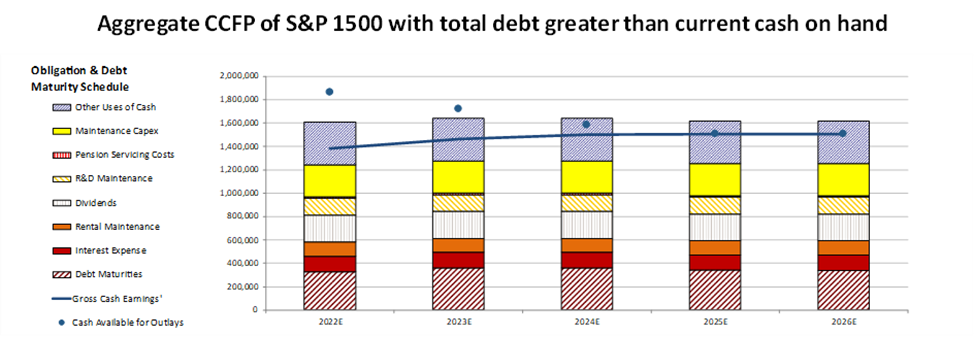Prior Reckless Corporate Habits are Creating an Opportunity for Investors

Everybody gets reckless during good times.
It is fun to run a firm when everything is going well.
Interest rates are low, access to capital is cheap, and customers are happy to buy products and services.
Companies can take on debt with low interest to invest, fuel growth, and make acquisitions.
And when the debt comes due in a few years, it can be refinanced as credit easily and interest rates stay low.
Ideally, continued investment means higher returns and a bigger scale for everyone involved. Lenders, shareholders, management, board, clients, and suppliers are all very happy.
The virtuous cycle of leverage in good times is why one of the favorite moves of activist investors during good times is quite simple. They just tell companies to do a leveraged recapitalization, where they take out debt at low interest rates, and buy back shares.
This increases the company’s leverage ratio and reduces the number of outstanding shares, which means a bigger ownership percentage for the remaining shareholders.
That’s in good times. Good times don’t last forever though.
And now, we are seeing what happens in bad times. As interest rates are high and companies are facing refinancing headwalls coming in the next 3-5 years, they are starting to look to unwind these moves.
A recent E&Y poll showed that now CEOs are no longer looking to invest.
About 44% of U.S. CEOs are looking to make divestitures this year. They’re scrambling to take apart the empires they’ve built.
The biggest reason is that they want to raise cash to manage their debt maturities.
Knowing when those debt maturities are coming due can help us identify specific companies that might have to take drastic action.
On a macro basis, looking at this data helps us understand when this tight door of selling assets is going to have the most people trying to squeeze through it at the same time.
When it happens, the flood of sellers is likely to lead to valuation multiples falling, and some sellers being left out in the cold to face tough decisions about their debts that are coming due.
Today, we will analyze when to expect this sell-off, and what it means for investors.
Investor Essentials Daily:
The Monday Macro Report
Powered by Valens Research
U.S. debt maturities signal many are going to be running for the exit in 2024 and into 2025.
Our aggregate Credit Cash Flow Prime (“CCFP”) shows when U.S. companies as a whole have debt coming due.
We use the CCFP to figure out if there is a real credit risk for companies. It compares the company’s financial obligations against its cash position and expected cash earnings.
When we do this analysis for the whole U.S. market, or in this case, for the companies in the S&P 1500 that have more debt outstanding than cash on hand, we see the following picture.
The stacked bars represent the U.S. firms’ obligations each year for the next five years. These obligations are then compared to these firms’ cash flow (blue line) as well as the cash on hand available at the beginning of each period (blue dots).
The CCFP shows that the companies who most need cash flow to handle obligations are going to run into tough decisions by 2024.
Cash flows can cover all other obligations than “other uses of case” which represents a normal level of share buybacks. Companies will have to start thinking about ways to raise cash though if they want to keep shareholders happy by buying back shares, or if they want to be able to manage their debt maturities that are coming due.
While companies do have cash on hand to help manage this until 2024 and 2025, there is one strong conclusion here.
Companies need more capital, and they need it soon.
This is exactly what CEOs are looking at when 44% of them say they’re looking to raise capital to pay down their debts. This view isn’t just a whim of the C-suite, it’s a necessity.
That is why next year may be the year of divestitures in a big way.
This might create opportunities for smart investors.
When a company spins off a business unit, data shows that divestiture regularly outperforms the market. Research by Credit Suisse and JPMorgan shows spin-offs beat the market by upwards of 13% in the first year after standing up on their own.
That is why there is even a report people specifically dedicated to these opportunities called The Spin-Off Report.
When companies decide to sell assets to raise capital, they regularly choose to sell underperformers at the lowest point.
In the coming quarters, companies that are facing a cash crunch because of looming debt maturities are likely to be looking to sell a lot of businesses that sound like that.
Smart investors who can take advantage of management teams who overspent in boom times are going to reap dividends by being patient now. Keep your eyes peeled.
Best regards,
Joel Litman & Rob Spivey
Chief Investment Strategist &
Director of Research
at Valens Research





